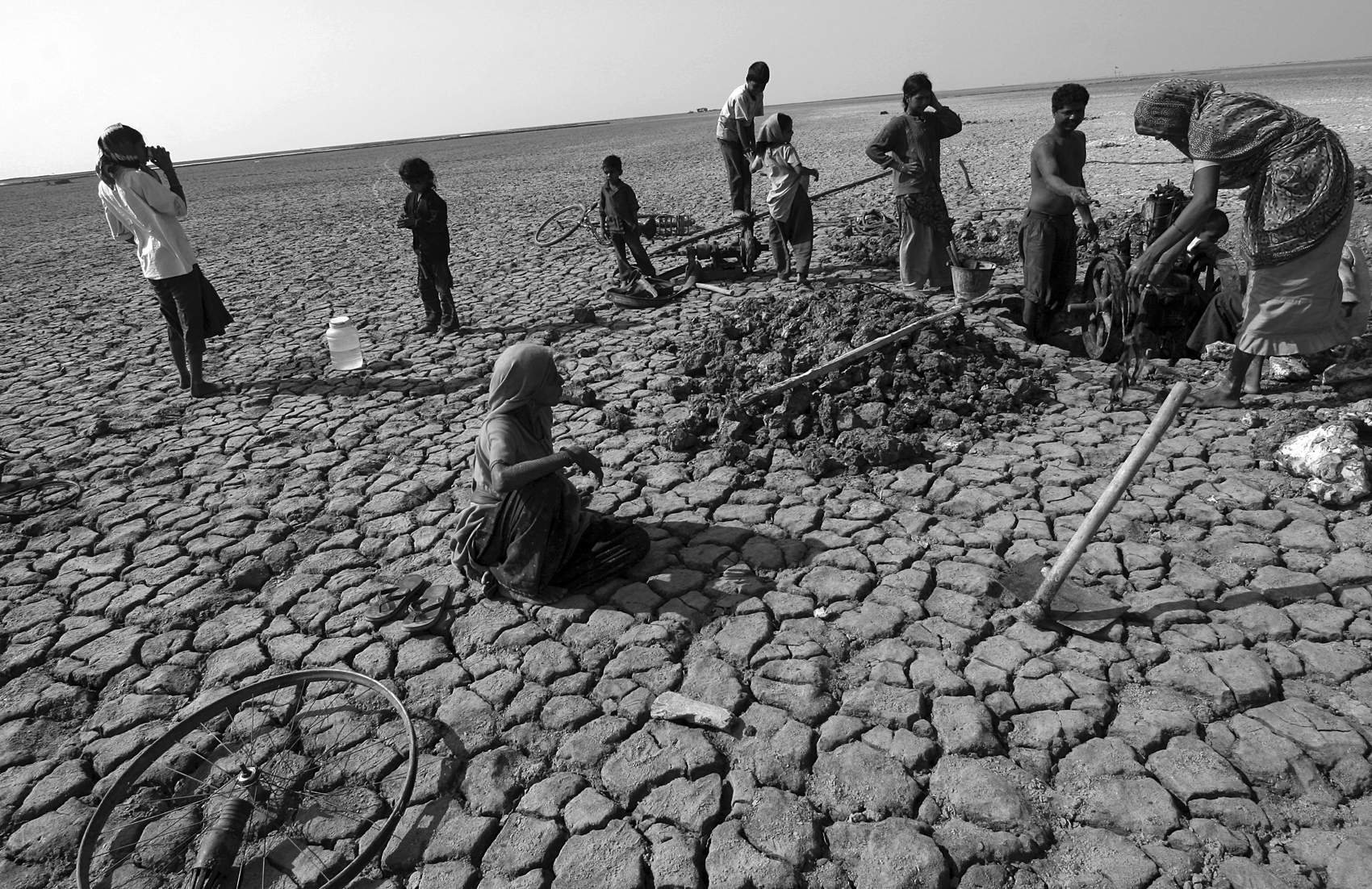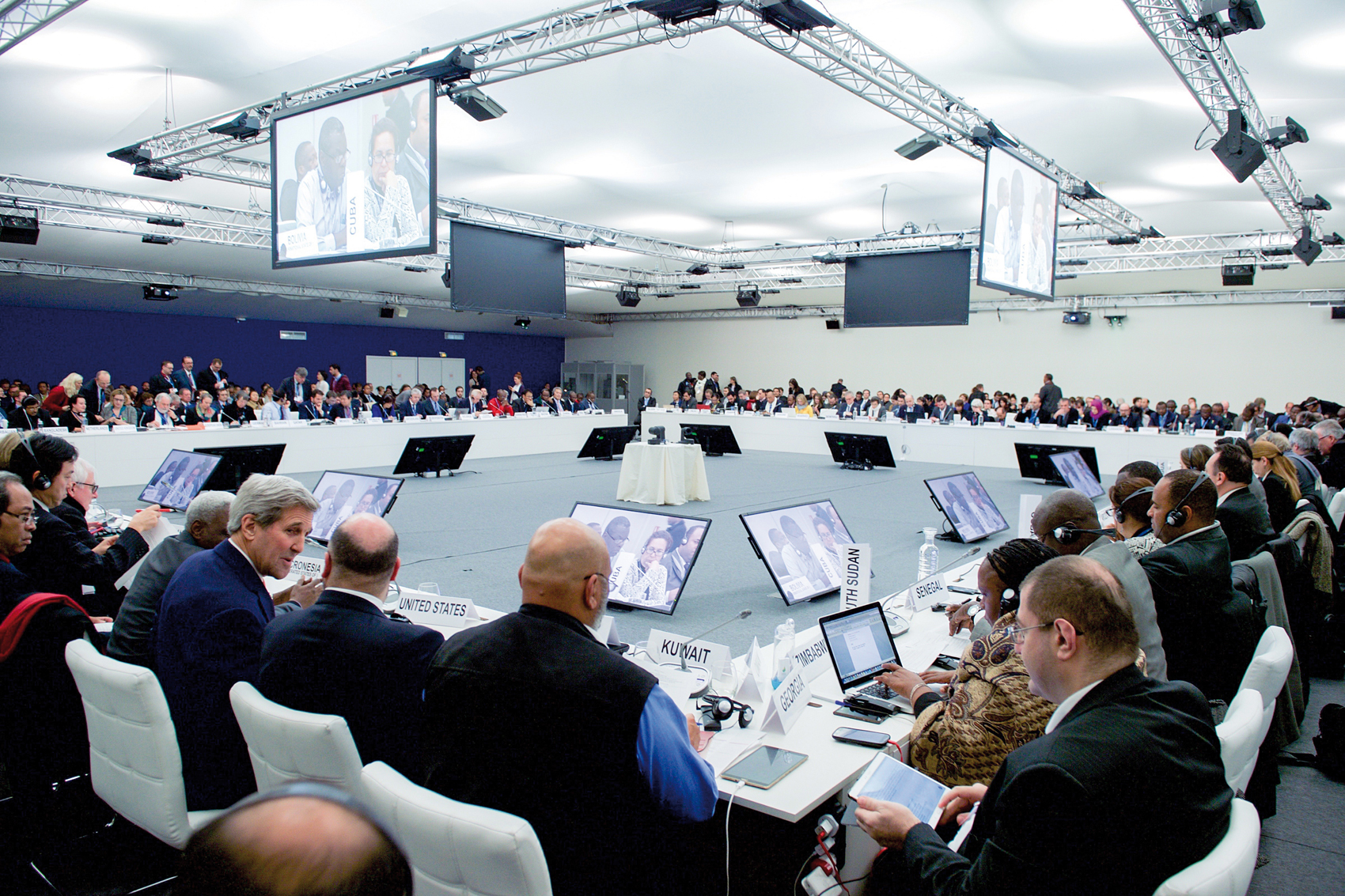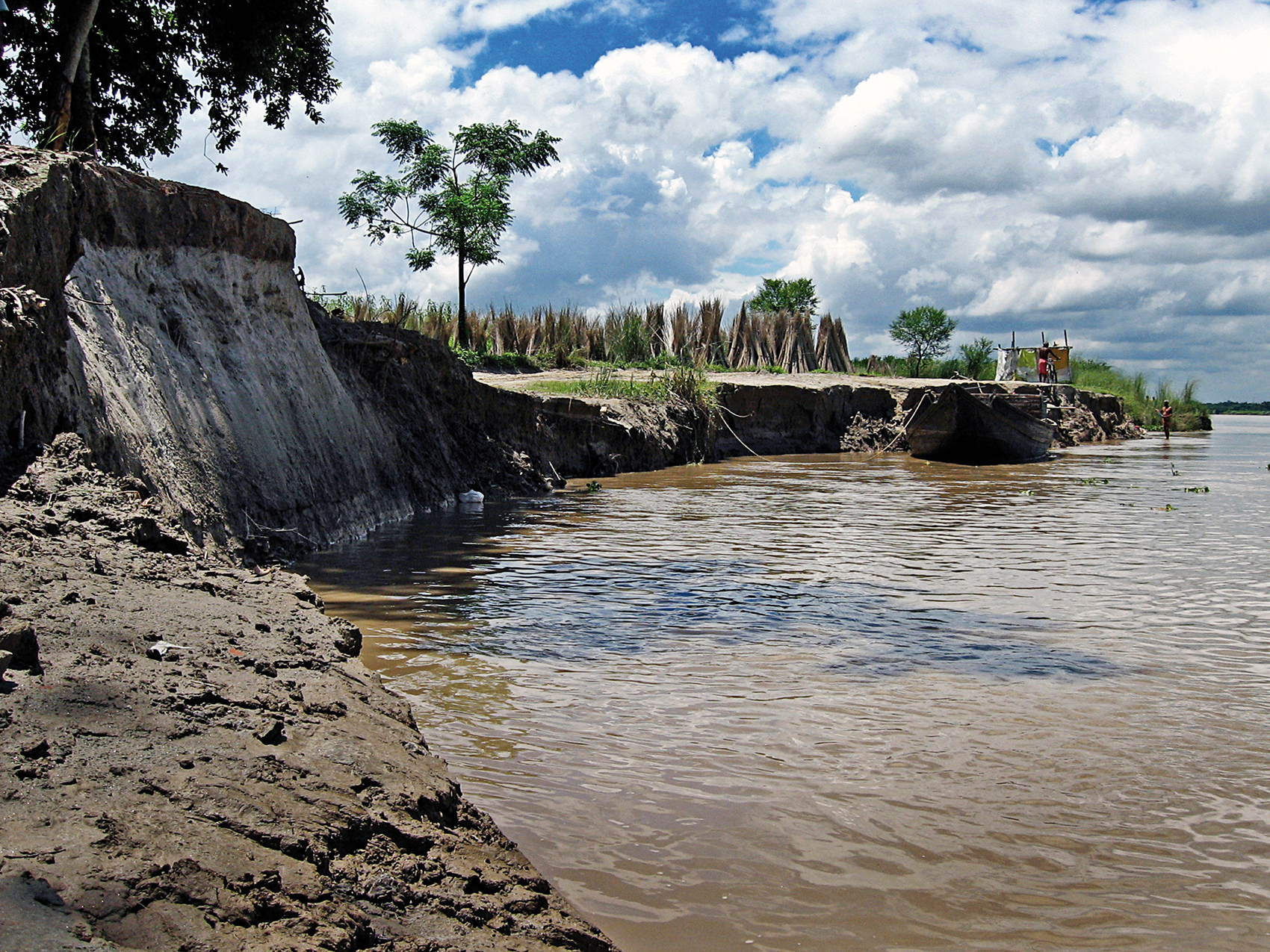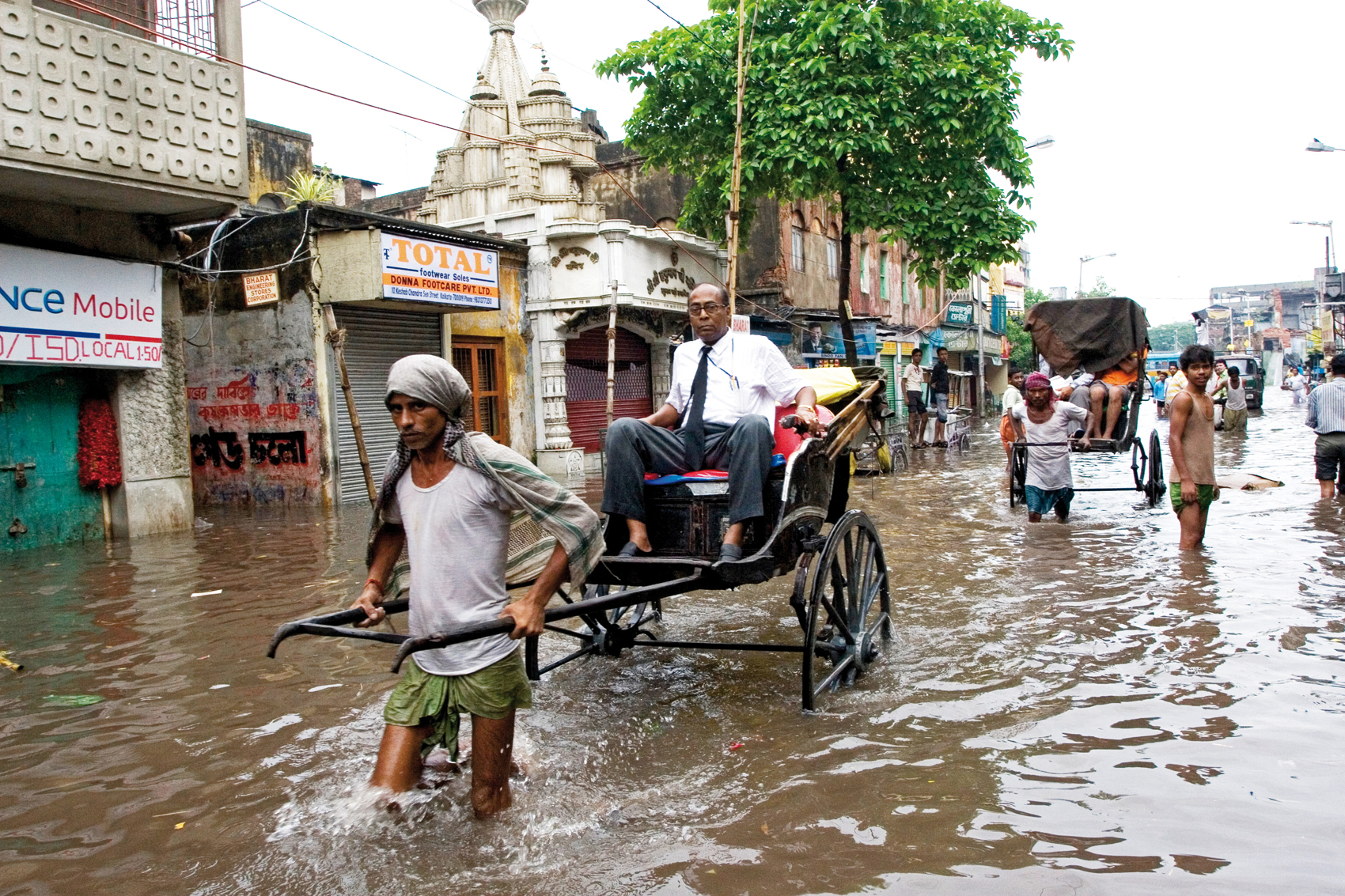Climate Apathy - Public Engagement By Scientists Could Turn The Tide
First published in Sanctuary Asia,
Vol. 38
No. 8,
August 2018
By Lekha Sridhar
Floods that destroy everything in their wake, heat waves that cause thousands of deaths, soil and atmosphere changes that impact food production, droughts that are leaving the water table at historic lows… India is already witnessing the impacts of climate change. Yet, most Indians show little signs of being perturbed or alarmed.
As a climate policy researcher, the subject of my work often comes up in conversation with friends and acquaintances. Overwhelmingly, the response tends to be, “It’s for my grandkids to worry about,” or “We’re already screwed, so why do anything about it?” My friends’ attitudes to climate change are not unusual – Indians’ knowledge of climate change is worryingly low. A 2012 Yale study found that while over 70 per cent of the country believed that climate change is a reality, only seven per cent knew ‘a lot’ about the subject. Only 41 per cent believed that the country needed to be doing more. A 2017 synthesis study in the Oxford Research Encyclopedia of climate change communications studies in India found that a majority of Indians (especially farming communities) perceive changes in local climate, but they attribute the changes to a range of causes, which may not be scientifically accurate.
India is one of the most vulnerable countries to climate change. At the local level, many areas could face flooding, reduction in crop yields, and heat waves. While climate denialism has not taken root in the country, apathy or underestimation of impact timescales are equally dangerous. Communicating the ‘how’ and ‘why’ of climate change will not only help Indians understand why their climate is changing, but will also let people assess whether the government’s policy response has been sufficient. For adaptation actions especially, the local community’s intimate knowledge of the area can be crucial in developing appropriate strategies.

The effects of carbon-emitting activities such as mining, deforestation, and industrialisation are borne disproportionately by low-income, marginalised groups.
Photo:G Pattabiraman/Entry-Climate Change Photography Contest
STATE OF COMMUNICATION
Despite being so vulnerable to climate change, climate communication and awareness is at an all time low. A 2017 Oxford Study found that of all studies of climate change-related media coverage found that climate change accounted for about 0.28 per cent of total media coverage. Television channels had the poorest coverage; only environmental news comprised 0.8 per cent of news content during prime time, even though television can have the biggest impact in changing people’s risk perception of climate change. Even major developments such as the release of the IPCC Fourth Assessment reports were not covered by major news channels.
This minimal coverage was mainly driven by NGO activities and India’s negotiating position at the United Nations Framework Convention of Climate Change. While this is an important topic, there is little discussion on climate impacts and the need for building climate resilience in our cities and communities. Even extreme events such as floods and long-term temperature developments have not influenced climate change content – this is especially concerning given how many cities and regions have faced extreme flooding events in the past few years (though not all may be linked to climate change).
Outside of the media also, people’s groups and individuals have been left out of the government’s climate policy-making process – both from consultation and to policy implementation. Policy-making and discussion of new and emerging research are closed-door events with think tanks, NGOs, industry associations and government officials. Apart from the occasional opinion piece in national English media and intermittent awareness campaigns by the Department of Science and Technology, few attempts have been made to extend outreach and awareness to the general public.
It should be noted that while most Indians have observed changing weather patterns, this should not be mistaken for awareness of climate change, especially since most are not aware of the impact of human activities on climate change. This level of understanding about climate change matters. A study by Climate Asia across all Asian countries found that although the Chinese people surveyed had the smallest proportion of people who had personally felt the impact of climate change, their level of understanding about climate change was among the highest in the region. As a result, 40 per cent of the surveyed people said they were taking action compared to the 23 per cent across the region. Eighty nine per cent of people said that they were using energy more efficiently, compared with an average of 74 per cent across the other Asian countries.
Even aside from these measurable benefits, an informed citizenry is an empowered citizenry. While many people’s groups, communities and individuals are demanding more from their governments on issues like air pollution, deforestation, and industrial pollution, climate change is yet to see mass citizen movements. That said, it should be noted that the burden of protests against carbon emitting activities (like mining, deforestation, and industrialisation) are borne disproportionately by low-income, marginalised groups who are also most affected by such activities. As a result, it is all the more important to communicate climate impacts to a wider audience to share this burden of protest against government apathy.

Despite being so vulnerable to climate change, climate communication and awareness is at an all time low in India. This minimal coverage too was mainly driven by India’s negotiating position at the United Nations Framework Convention of Climate Change.
Photo:U.S. Department of State/Public Domain
SCIENTISTS AND COMMUNICATION
One group that is noticeable in its absence in climate communications are climate scientists. Despite being home to a plethora of well-regarded scientific research institutes, labs and university departments, scientists are nowhere to be seen or heard in media. While think tanks and NGOs seek media coverage to highlight their work, scientists seem just about content with getting published in scientific journals or talking to other scientists at conferences.
A cursory survey of some of the country’s prominent universities and climate and atmospheric research institutes reveals that none of them have any non-specialist information about their research nor do they have any awareness creation programmes to interact with the general public.
This is not a specifically Indian phenomenon – in many countries, people are calling on scientists to step up and engage with the masses. While it may have been sufficient for scientists to focus their time solely on research previously, many believe that this is no longer the case.
Indian scientists and research institutes face additional problems in light of precipitously low funding and insufficient spending on R&D. During last year’s budget session, the Ministry of Earth Sciences, which is engaged in climate-change research, received only INR 9,093 crore, after a paltry hike of 2.8 per cent. Some universities are also facing additional problems in the form of reduced fellowships for PhD students. Council of Scientific and Industrial Research (CSIR) laboratories were in a state of severe financial emergency as of last year. Expecting scientists whose fellowship payments have not yet been approved or whose institutions are operating in the red to focus on anything beyond research is a fool’s errand.
Their reluctance or inability to lead from the front may be hurting the cause of awareness – scientists are the most trusted group among government, politicians, NGOs and media when it comes to communicating climate change. The 2012 Yale study found that a whopping 73 per cent of the surveyed people found scientists to be the most credible sources of information.

Along the bank of the Ganges river in West Bengal, the loss of green cover has led to erosion and will eventually cause ecosystem collapse. This directly affects the lives of communities settled along the river bank, often exposing their settlements to flooding during the monsoon.
Photo:Angshuman Paul
CHANGING RISK PERCEPTION
But can scientists engaging with the public make a difference? Many in the scientific community think so. They argue that scientists have an obligation to add their well-informed ideas to public discourse and help shape public opinion. Engagement with stakeholders too is believed to be critical towards finding common ground on issues that affect society, thus provide a constructive platform to develop policy.
A 2015 Yale study found that in India (and most countries), education levels tend to be the strongest predictor of climate change awareness, but access to communications can also positively impact awareness. The results of the study suggest that support for climate action relies on increasing climate literacy through public engagement.
Many prominent climate scientists now spend significant amounts of time engaging with people on social media. Research suggests that they may be on the right track: once scientists gained over 1,000 followers on Twitter, their audience went from a primarily scientific/academic audience to a diverse group of organisations, media, members of the public, and decision-makers. These followers had the potential to further disseminate and expand the reach of scientific research, thereby making it worthwhile for scientists to build their social media presence.
Many scientists also believe that public engagement can be beneficial to them. It can help scientists connect viewpoints from different disciplines, test ideas for their viability on the ground, expand the reach of their work, and of course, increase their own visibility. An informed public can also contribute to data collection; as part of the research program on Climate Change, Agriculture and Food Security, farmer observations of effective technologies, crop varieties and management practices are being shared to inform location-specific climate change adaptation strategies in regions of Africa, Asia, and Latin America. Observational data on flora and fauna, local weather, crop yields and several other parameters are easy to obtain from agricultural communities – creating awareness among such communities on what to observe and why, can give scientists more granular data for analysis.

Most people are unable to comprehend the timescales involved and therefore tend to minimise the problem. Connecting research to issues that personalise the problem, in the form of local impacts such as floods, cyclones and droughts or disappearing local traditions or landmarks can change this.
Photo:Partha Pal
WAY FORWARD
Given the enormous benefit to the public, to climate discourse and to scientists, there is much that can be done by the science community.
At a minimum, research institutes should explore ways to make their research more accessible to the public – on the Internet and on social media.
Many have also noted the slow death of science journalism in India and the steady disappearance of science magazines. This is an area where institutions can play a very important role: climate literacy programmes, especially on the science of climate change for journalists can help them better understand new research and cover more climate-related topics.
Much research has been done on how to make climate communication effective. One of the most useful ‘rules’ for scientists is to reduce psychological distance between climate change and people. Many people are unable to comprehend the timescales involved and therefore tend to minimise the problem. Connecting research to issues that personalise the problem, in the form of local impacts, and disappearing local traditions or landmarks can change this. Institutions can also collaborate with media companies to produce content for mass consumption that localise the issue. Television shows, radio shows, and interactive websites can all play a useful role. In fact, it is extremely encouraging to note that radio, which is extremely popular in rural areas, has an increasing amount of scientific content.
The issues of air pollution and tree felling have captured the public imagination in a way that has been unprecedented and unlike any other issue. Both these issues are intimately connected to climate change and using them to engage with the public, either on television, radio or social media can increase climate literacy. Similarly, extreme weather occurrences can also serve as examples to get climate awareness some traction.
Of course, the issue of funding cuts for research institutions has no easy answer. Many strongly believe that international funding for climate resilience programmes should go to developing country universities, which have the capacity but no funds, rather than international consultancies. In addition to international funding, greater prioritisation of climate research and science education by the government is the need of the hour.
Lekha Sridhar is a climate policy analyst and lawyer. Her current work focuses on the implementation of the Montreal Protocol in India. She was an Alexander von Humboldt International Climate Protection Fellow and has a Master of Public Policy from the University of Oxford.





